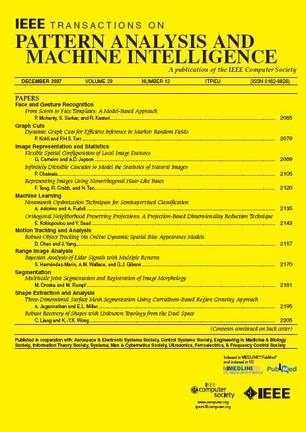ACLI:利用相邻卷积层相互依赖和$\gamma$-弱子模块化的CNN剪枝框架。
IF 18.6
1区 计算机科学
Q1 COMPUTER SCIENCE, ARTIFICIAL INTELLIGENCE
IEEE Transactions on Pattern Analysis and Machine Intelligence
Pub Date : 2025-09-16
DOI:10.1109/tpami.2025.3610113
引用次数: 0
摘要
今天,卷积神经网络(CNN)修剪技术通常依赖于手工制作的重要性标准和修剪结构。由于它们的启发式性质,这些方法可能缺乏通用性,并且它们的性能不能得到保证。在本文中,我们提出了一个理论框架,通过利用$\gamma$-弱子模块化的概念,基于一个新的有效的重要性函数来解决这一挑战。通过推导修剪层之后的层的绝对误差的上界,我们将重要性函数表述为$\gamma$-弱子模函数。该公式能够开发一种易于实现,低复杂性和无数据无关的算法,用于选择要从卷积层中删除的滤波器。大量的实验表明,我们的方法在各种数据集上优于最先进的基准网络,其计算成本与最简单的修剪技术(如$l_{2}$-norm修剪)相当。值得注意的是,该方法的准确率为76.52%,而总体最佳基线的准确率为75.15%,网络参数减少了25.5%。根据我们提出的修剪方法的资源效率指标,ACLI方法的效率比其他基线高出几个数量级,同时保持了竞争性的准确性。本文章由计算机程序翻译,如有差异,请以英文原文为准。
ACLI: A CNN Pruning Framework Leveraging Adjacent Convolutional Layer Interdependence and $\gamma$-Weakly Submodularity.
Today, convolutional neural network (CNN) pruning techniques often rely on manually crafted importance criteria and pruning structures. Due to their heuristic nature, these methods may lack generality, and their performance is not guaranteed. In this paper, we propose a theoretical framework to address this challenge by leveraging the concept of $\gamma$-weak submodularity, based on a new efficient importance function. By deriving an upper bound on the absolute error in the layer subsequent to the pruned layer, we formulate the importance function as a $\gamma$-weakly submodular function. This formulation enables the development of an easy-to-implement, low-complexity, and data-free oblivious algorithm for selecting filters to be removed from a convolutional layer. Extensive experiments show that our method outperforms state-of-the-art benchmark networks across various datasets, with a computational cost comparable to the simplest pruning techniques, such as $l_{2}$-norm pruning. Notably, the proposed method achieves an accuracy of 76.52%, compared to 75.15% for the overall best baseline, with a 25.5% reduction in network parameters. According to our proposed resource-efficiency metric for pruning methods, the ACLI approach demonstrates orders-of-magnitude higher efficiency than the other baselines, while maintaining competitive accuracy.
求助全文
通过发布文献求助,成功后即可免费获取论文全文。
去求助
来源期刊
CiteScore
28.40
自引率
3.00%
发文量
885
审稿时长
8.5 months
期刊介绍:
The IEEE Transactions on Pattern Analysis and Machine Intelligence publishes articles on all traditional areas of computer vision and image understanding, all traditional areas of pattern analysis and recognition, and selected areas of machine intelligence, with a particular emphasis on machine learning for pattern analysis. Areas such as techniques for visual search, document and handwriting analysis, medical image analysis, video and image sequence analysis, content-based retrieval of image and video, face and gesture recognition and relevant specialized hardware and/or software architectures are also covered.

 求助内容:
求助内容: 应助结果提醒方式:
应助结果提醒方式:


